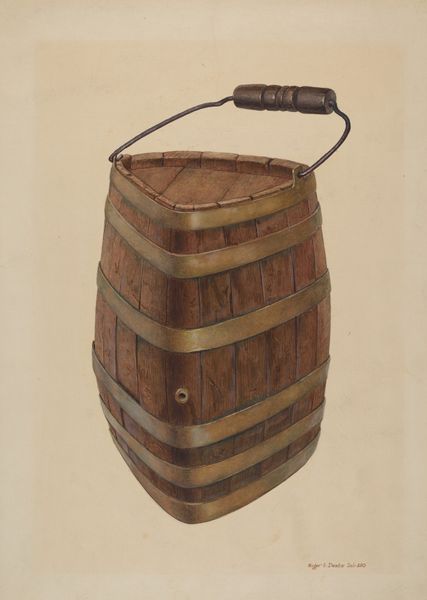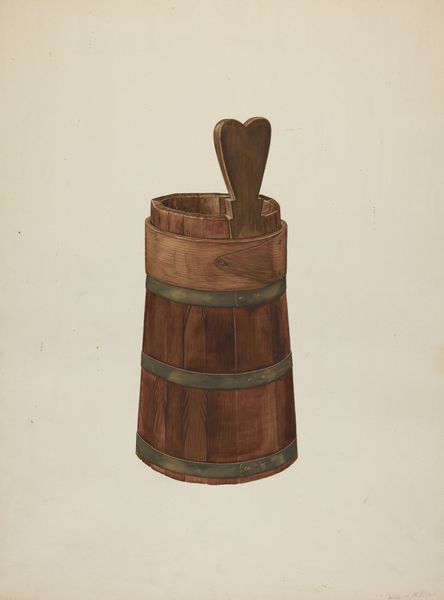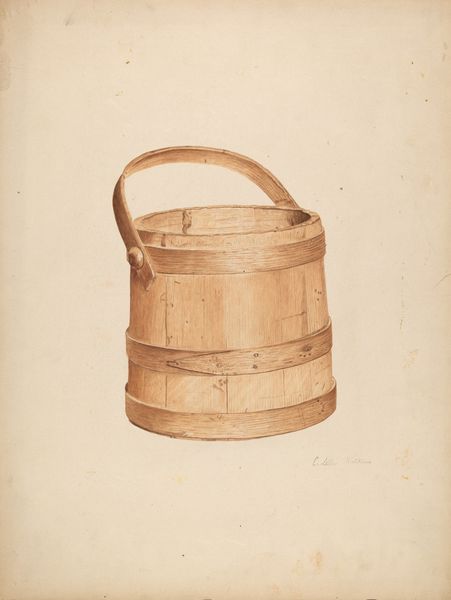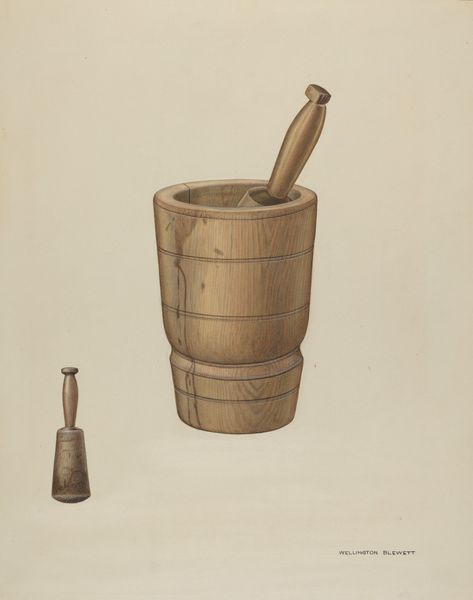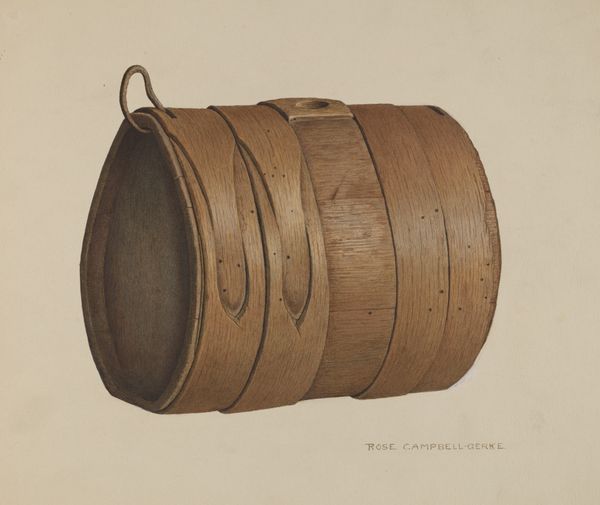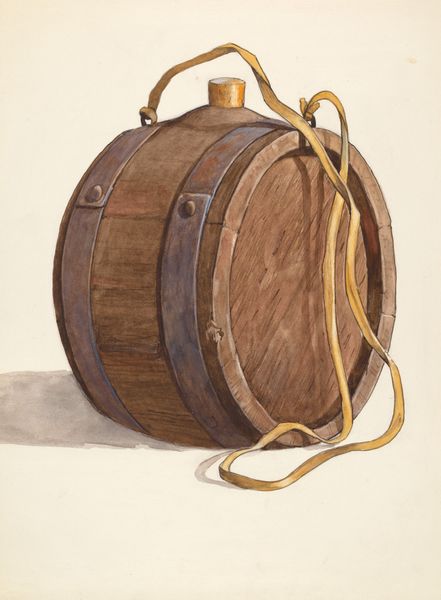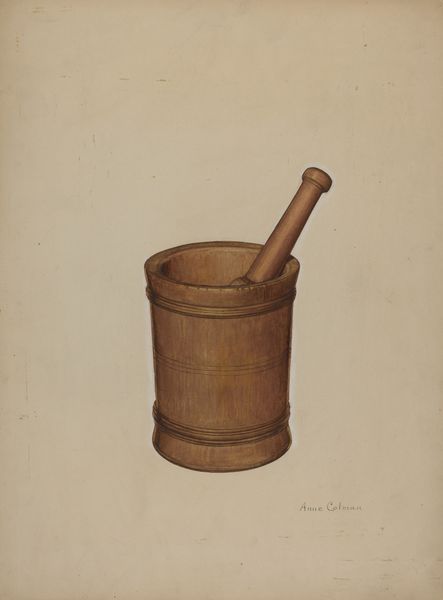
drawing, watercolor
#
drawing
#
charcoal drawing
#
oil painting
#
watercolor
#
coloured pencil
#
watercolour illustration
#
watercolor
Dimensions: overall: 25 x 36 cm (9 13/16 x 14 3/16 in.)
Copyright: National Gallery of Art: CC0 1.0
Editor: So, this is Edward L. Loper's "Field Keg," from around 1939, made with watercolor. I’m really struck by how ordinary the object is, yet it's rendered with such detail. What strikes you about this piece? Curator: What interests me most is situating this seemingly mundane object within the historical context of the late 1930s. Considering the economic hardships of the Great Depression and the rumblings of war, could this keg represent something more than just a container? Editor: Hmm, I hadn’t thought of it that way. I just saw a simple, well-made object. Curator: Exactly. Who would have owned something like this, and what would they have used it for? It brings to mind the material culture of the working class. Consider, also, the social dimensions around alcoholic drinks during times of uncertainty; would such a common and easily accessible object reflect those aspects of everyday culture? Editor: So it's less about the aesthetic and more about what it meant to people back then? Curator: The aesthetic is undoubtedly present – the rendering is skilled – but it becomes truly compelling when you consider it as a cultural artifact, a silent witness to a specific time and place, especially within the working class context in the US, given the artist’s background. How might the experience of people of color influenced this composition or choice of the keg to represent aspects of rural or urban life during that era? Editor: That’s a powerful perspective shift. I hadn't even considered Loper’s position and what elements of those themes are captured within the composition. It encourages thinking more deeply about those elements. Curator: Exactly! And questioning our initial assumptions when encountering artworks, as representations of history, labor, and even survival. What was at stake then that still reverberates today. Editor: I’ll definitely be looking at art with a more critical and intersectional lens now.
Comments
No comments
Be the first to comment and join the conversation on the ultimate creative platform.

